
7 Tips for Maximizing Your RV Fuel Economy on the Road
7 Tips for Maximizing Your RV Fuel Economy on the Road
Factors to consider when trying to save on RVing fuel costs.
By: Kelly Laustsen & David Somach
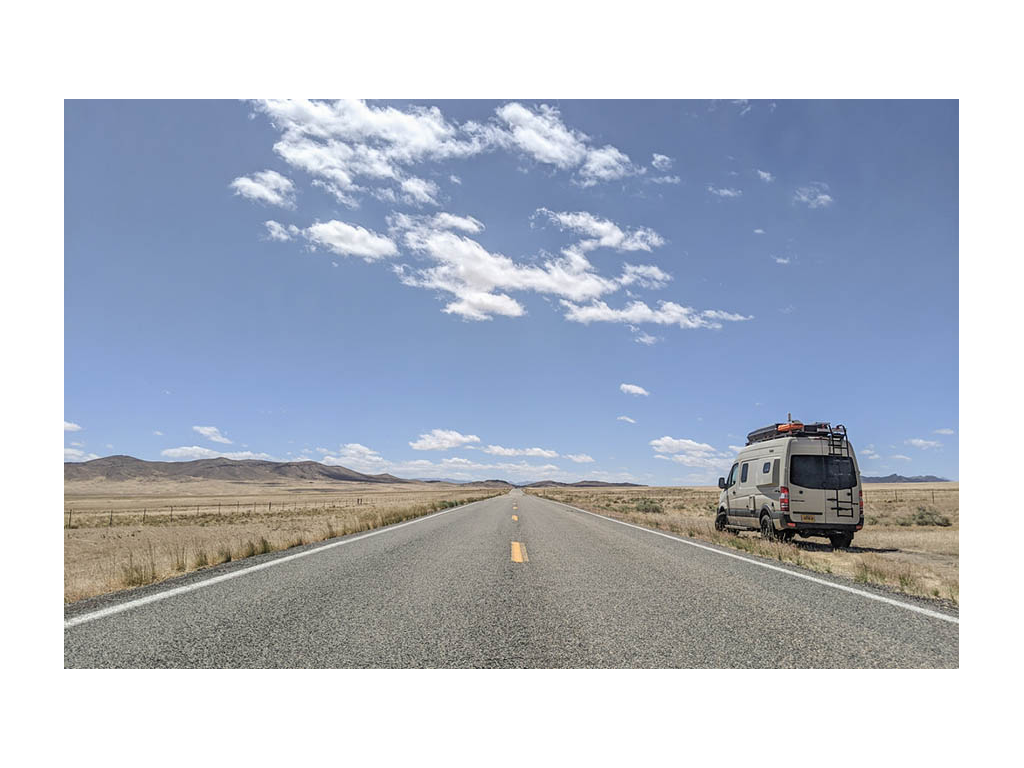
During our fifteen months traveling around the United States and Canada in our Revel, we experienced the gambit of driving conditions – from eighty miles per hour flat highways in Montana to steep, rocky forest roads in Idaho and snow-covered mountain roads in British Columbia. Even on a weekend trip in our home state of Oregon, we can cover a mix of driving speeds, terrains, and weather.
As a result, we see a range in our fuel economy, generally between twelve miles per gallon (on high-speed, hilly roads) to sixteen miles per gallon (on lower speed, flatter roads). That’s why we’ve done our best to educate ourselves on what influences our fuel economy so we can maximize efficiency.
Before our van trip, we were used to driving smaller cars and not thinking so much about each fill-up. In the van, we reset the odometer each time we go to the gas station and make a game of guessing our fuel economy on that leg of the trip.
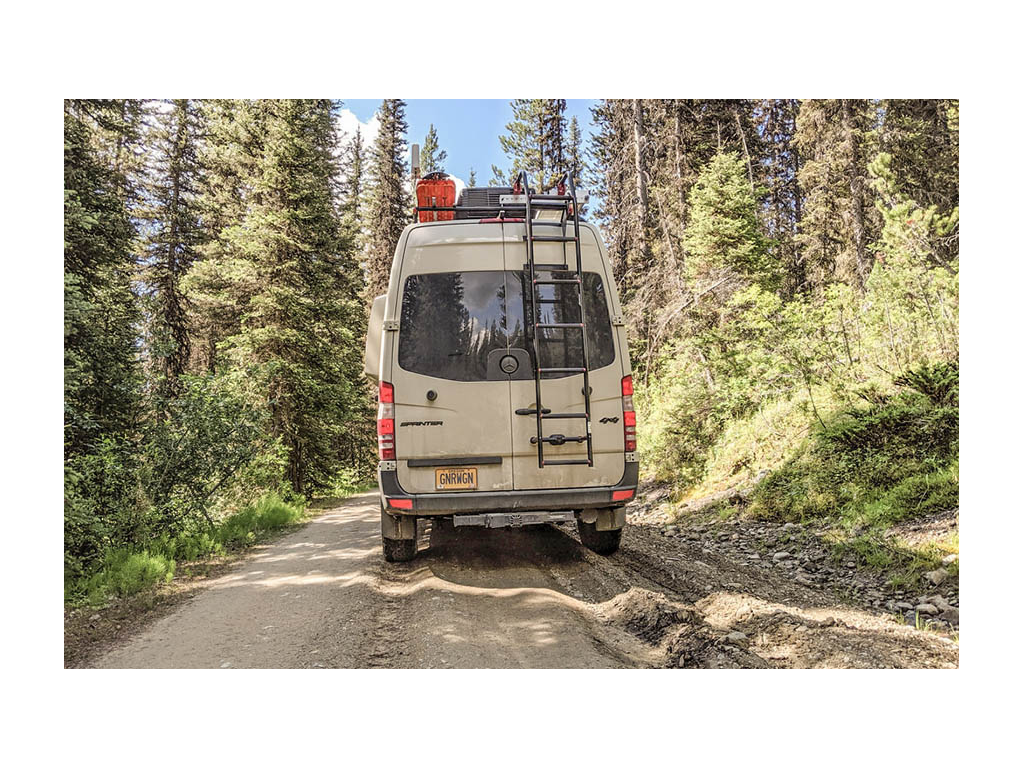
Through research and personal experience, we’ve made some fuel-saving changes to our driving habits and route choices that we think will be helpful to other RVers (even if you are in a bigger RV!). Here are the main factors that influence our fuel economy and some tips to maximize your RV fuel economy:
1. Keep Speed Consistent & Slower
Driving speed is the biggest factor in our fuel economy, except for steep inclines and declines. We’ve noticed a sharp decrease in efficiency at over about fifty-five miles per hour and a larger impact on highways with eighty miles per hour speed limits, where most drive even faster. Add in some strong winds and our fuel economy can dip below twelve miles per gallon.
Our Tip: Keep your speed down and cruise in the right lane on highways. Increasing and decreasing speed levels uses more fuel than maintaining a consistent speed. We use cruise control as much as possible to keep our speed steady.
2. Adjust Your Driving Style
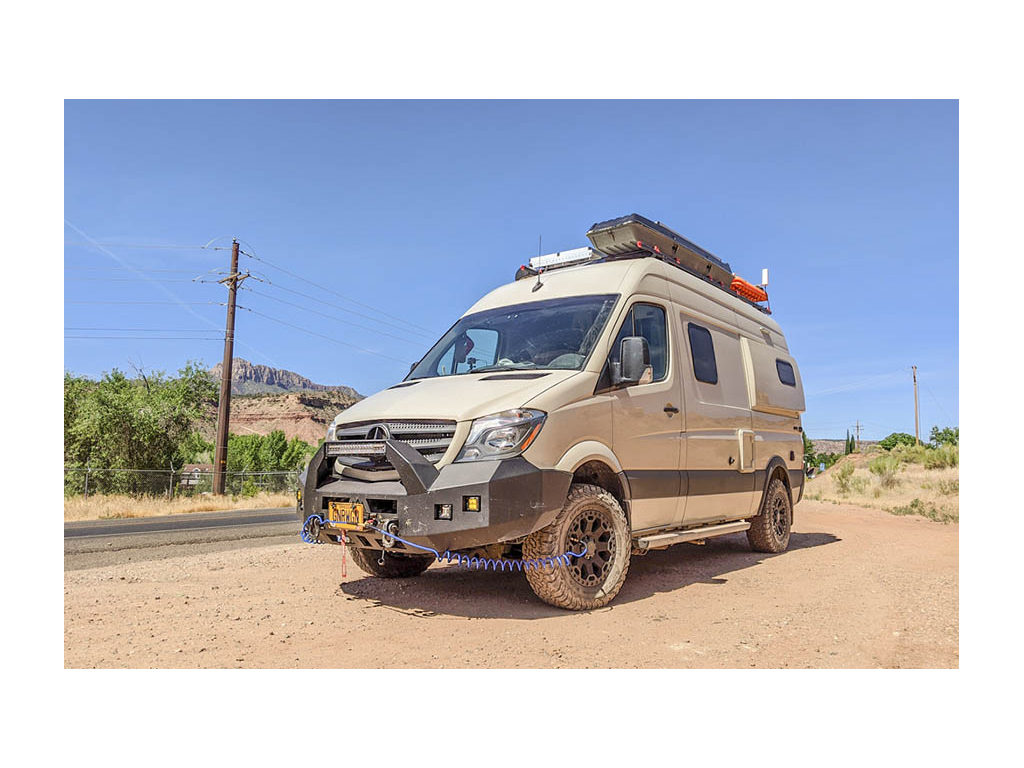
We drive defensively in the van, trying to anticipate the need to brake and avoiding quick decelerations. Rapid braking isn’t good for fuel economy. Also, the van can’t stop nearly as quickly as a car can. We try to avoid idling the van and turn the engine off if we’ll be stopped for more than a minute or two.
Our Tip: Watch the traffic ahead of your vehicle, looking for brake lights or signs of slowing vehicles. Even if we don’t need directions, we keep a navigation app open that will alert us to slowdowns.
3. Monitor Tire Pressure
We have a built-in tire pressure monitor that alerts us on the dash if our tire pressure is low. We have also installed an on-board air compressor, so we can easily add more air if our tires get low. But before doing that, we relied on a portable air compressor and gas stations. We used the website freeairpump.com to find gas stations on our route that offer free air.
Our Tip: Monitor your tire pressure periodically and don’t put off filling up if your tires need air.
4. Consider the Impact of Modifications
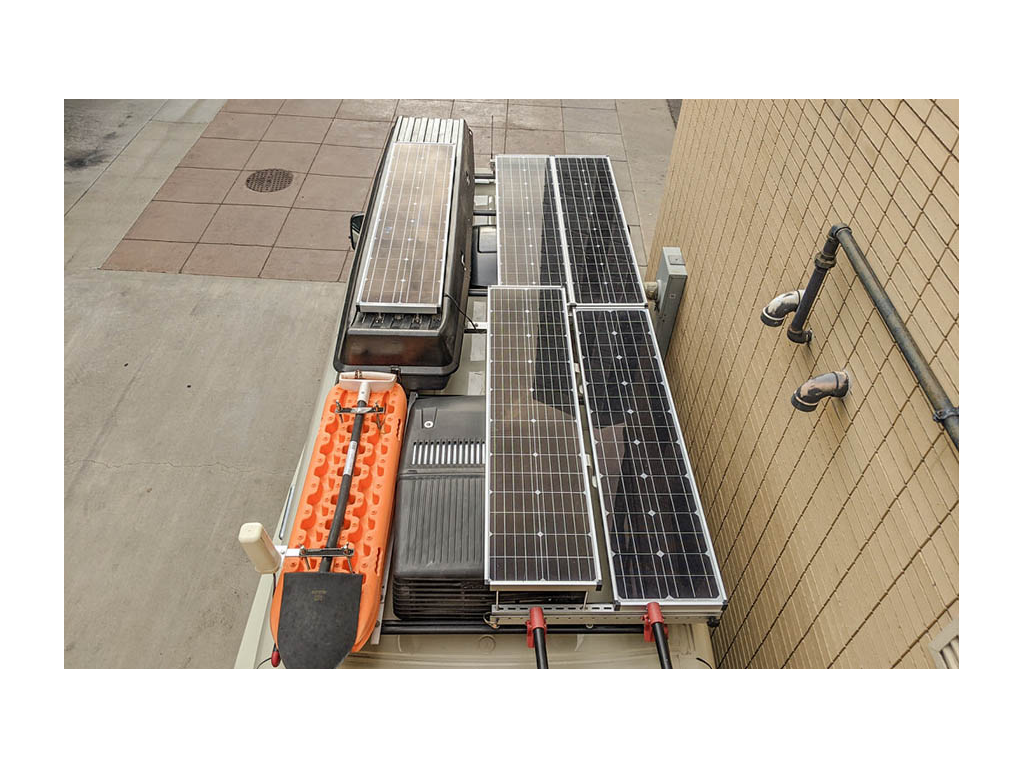
The gear we’ve added to the roof, the expedition bumper, and the larger all-terrain tires negatively impact our fuel economy. We expected this when we decided to make these changes and believe that the benefits of our roof-top solar, winch, additional lighting, and tougher tires are justification.
Our Tip: Be thoughtful in the modifications you make and think about how they’ll impact your fuel economy.
5. Pay Attention to RV Weight
We noticed a slight drop in fuel economy when we loaded up the van garage with bikes, outdoor gear, clothes, and food for our trip – although, not as significant as with the gear added to the roof and heavier front bumper and tires. Now that we are living in a house and just taking weekend trips, we’ve unloaded a lot and keep only essentials in the van.
Our Tip: Minimizing what you bring in your van or RV not only helps your fuel economy, but makes a small space much more livable.
6. Keep Up with RV Maintenance
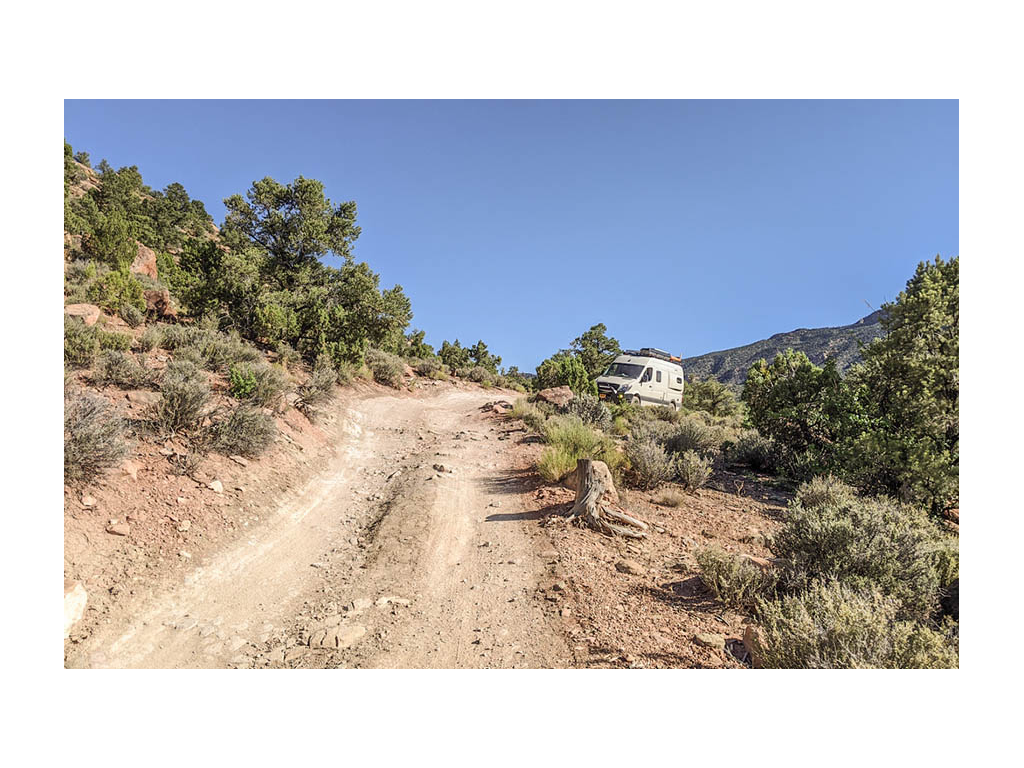
Keeping your RV properly maintained is key to the longevity of your vehicle and can also save you money in the long term by avoiding big fixes. In addition, maintenance issues can significantly hurt your fuel economy. For example, dirty air filters can negatively impact fuel economy.
Our Tip: We keep a log of van maintenance and have set reminders about service milestones to make sure we stay ahead of any problems.
Read more about RV maintenance checks you should be doing inside and outside your RV.
7. Plan Your Route
We’ve found that it’s quite effective to plan our route to minimize driving. We decided to spend our year of full-time RV travel moving pretty quickly, not spending more than a few nights in one spot. In order to minimize our time driving, we planned our route carefully to avoid backtracking and sometimes chose destinations out of convenience.
We use Google Maps for directions, but don’t always pick the top route selected by Google. We’ll compare route options to opt for lower speed routes or shorter routes, even if the driving time is longer.
Our Tip: Thoughtful advance planning can help minimize your time spent driving. Consider spending more time in less destinations and ensure that significant detours are worthwhile.
Final Thoughts on RV Fuel Economy
While a decrease in fuel economy has been a result of loading up and modifying our van, it hasn’t been as significant in our diesel-powered rig as it would be in a gas-powered van. Diesel engines generally suffer less of a hit to efficiency when loaded up or trailering than their gas-powered counterparts.
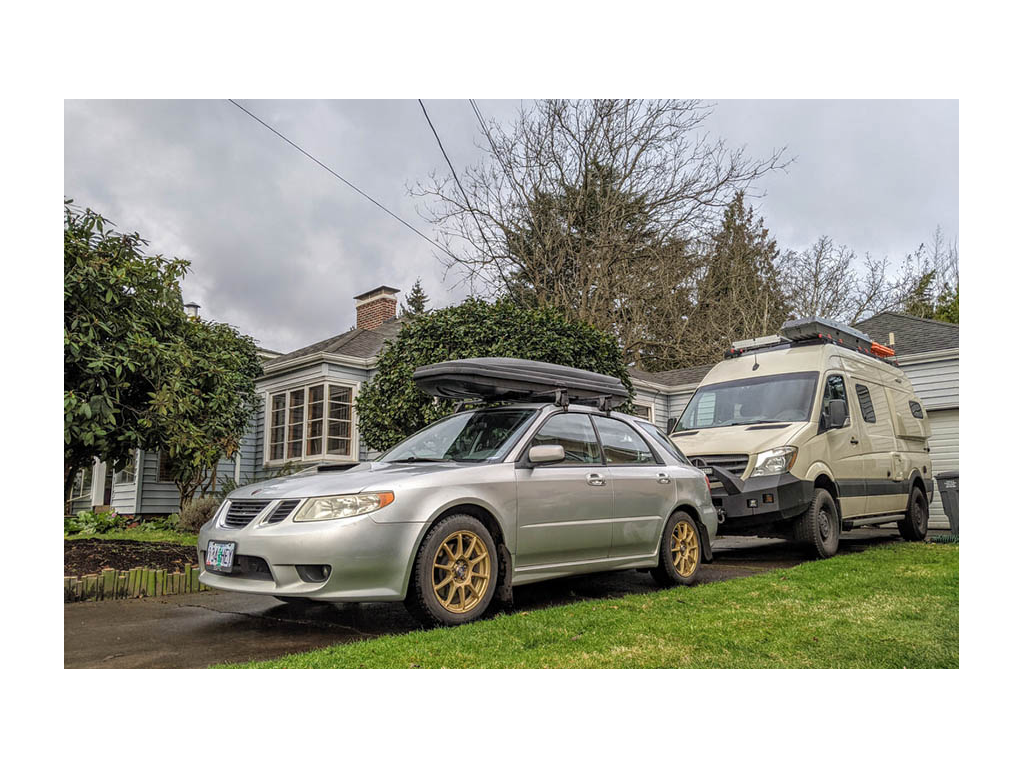
We think of our Revel van as a house that can drive, rather than thinking of it purely as a vehicle when considering fuel economy. It’s great that we can typically achieve sixteen miles per gallon with our driving style, given that the van weighs almost three times as much as our car and is about twice as tall.
Our two main strategies to save fuel are to take it slow and to be smart about our route planning in order to avoid unnecessary driving. Eighty miles per hour on the freeway isn’t great for our fuel economy, but also isn’t a great way of seeing the country! We prefer to cruise at fifty-five miles per hour on backroads, which also seems to be the most efficient speed for our van.
Comments
Comments on this post are moderated, so they will not appear instantly. All relevant questions and helpful notes are welcome! If you have a service inquiry or question related to your RV, please reach out to the customer care team directly using the phone numbers or contact form on this page .